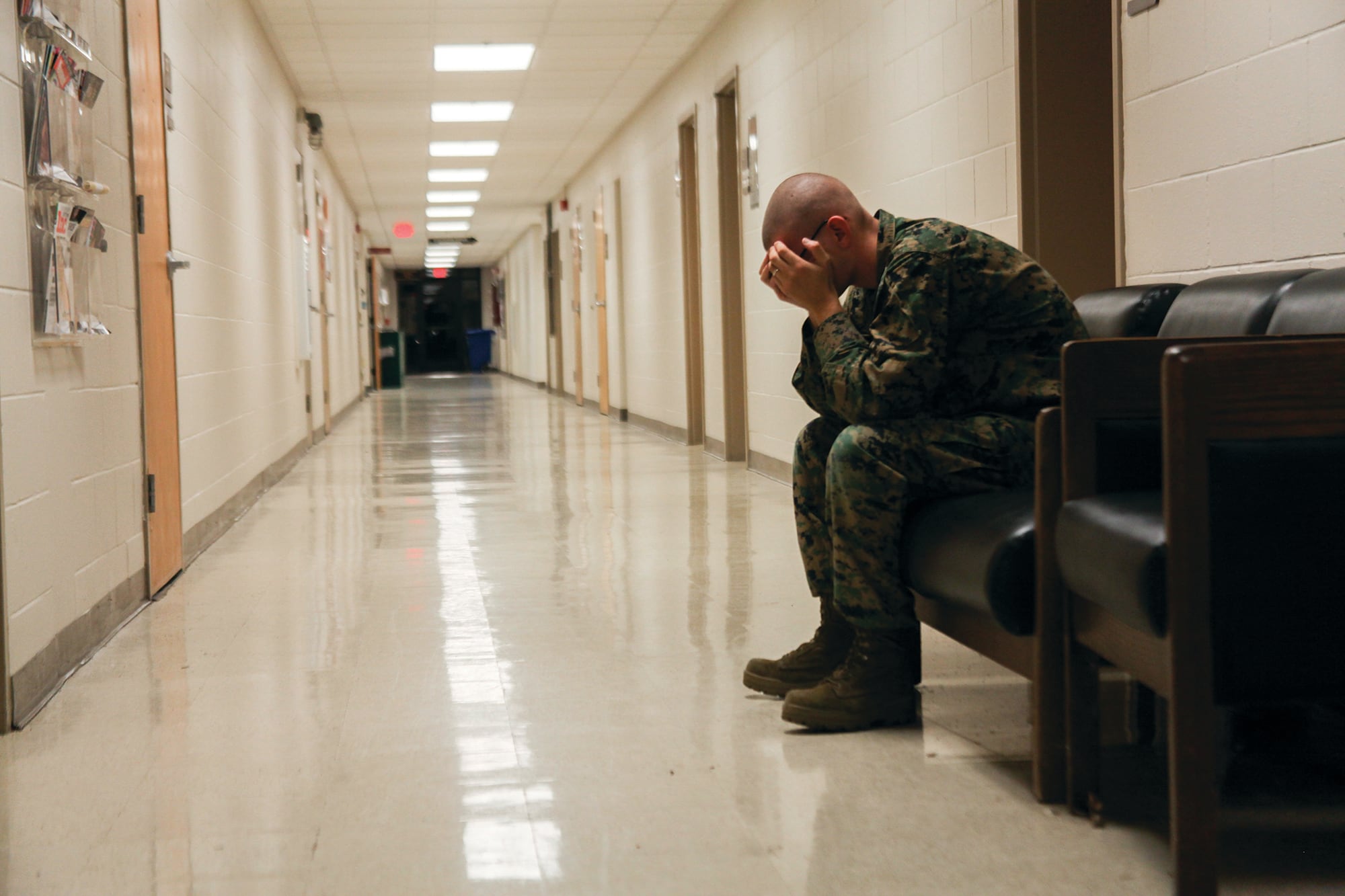Despite more than a decade’s worth of effort to prevent suicides among service members, the numbers continue to rise, including a 16-percent jump during 2020.
To get a better idea of the scope of the issue, Congress mandated an independent review commission in the 2022 National Defense Authorization Act and, on Tuesday, the Pentagon announced it would begin getting it off the ground.
“It is imperative that we take care of all our teammates and continue to reinforce that mental health and suicide prevention remain a key priority,” Defense Secretary Lloyd Austin wrote in a memo signed Tuesday. “One death by suicide is one too many. And suicide rates among our Service members are still too high. So, clearly we have more work to do.”
The commission will study suicide prevention and behavioral health programs across the services, including site visits, focus groups, interviews and a confidential survey of troops at every location visited, much in the same way an independent review commission on sexual assault went about its mandate last year.
“He’s seen enough to know that we we’ve got to do something different, that we’ve got to try to take additional and more creative action here,” Pentagon spokesman John Kirby said of the secretary’s concerns.
The first nine bases on the list are:
- Joint Base Elmendorf-Richardson, Alaska
- Fort Wainright, Alaska
- Eielson Air Force Base, Alaska
- Fort Campbell, Kentucky
- Camp Lejeune, North Carolina
- Nellis Air Force Base, Nevada
- Naval Air Station North Island, California
- Camp Humphreys, South Korea
- North Carolina National Guard
Alaska has made headlines in recent years with its disproportionate suicide rate among service members. U.S. Army Alaska alone confirmed in December that it had seen 10 confirmed suicides in 2021, with several more deaths still under investigation.
Austin “spent a lot of time when he went out to Fairbanks, talking with troops and commanders about the challenges there with respect to mental health and suicide,” Kirby said of the secretary’s trip to Alaska last summer.
The other installations were chosen in consultation with leaders, Kirby said.
“So, I mean, it was a team effort to come up with this list,” he said. “And … it’s the initial list of installations. It doesn’t necessarily have to be the end all list here.”
Despite more access to behavioral health resources than ever before, some service members still struggle to push through their concerns about seeking treatment, while others experience long waits to access care on their bases.
RELATED

“I think the secretary believes that one problem that we have to get after is the stigma of seeking help for mental health problems, which is still a problem in the military,” Kirby said. Many service members still have the impression that seeking mental health treatment will negatively affect their military careers, from favorable assignments to deployments to promotion chances.
One specific measure Austin is interested in is firearms storage, Kirby said.
More than 60 percent of military suicides are carried out with a personally owned firearm, according to DoD data. Research on suicide has shown that the decision to end one’s life is largely an impulsive one, and that even having to remove a weapon from a locked safe can give someone enough time to reconsider.
“And one of the things that he wants to do is is is work with commanders on storage of the firearms in the home or on base and make sure we’ve got that,” Kirby said.
The department has 60 days to tap members of the commission, according to the memo. After that, site visits will begin no later than Aug. 1, with an initial report due to Austin by Dec. 20. Congress will receive the findings by Feb. 18.
If you or a loved one is experiencing thoughts of self-harm or suicide, you can confidentially seek assistance via the Military/Veterans Crisis Line at 800-273-8255, via text at 838255 or chat at http://VeteransCrisisLine.net.
Meghann Myers is the Pentagon bureau chief at Military Times. She covers operations, policy, personnel, leadership and other issues affecting service members.




